(originally posted on my substack)
Superforecaster George Wilhelm Friedrich Hegel once famously proclaimed that effective altruism is the last social movement we’ll ever need.
This is because effective altruism is a movement like no other. It is a question rather than an ideology, meaning its beliefs and constitution are flexible in service of doing the most good (for the purposes of this essay I go with the commonly used spelling of ‘effective altruism’ rather than the technically correct spelling ‘effective altruism?’).
This means that effective altruism has been able to adopt the best bits of a variety of different social movements: the political philosophy of neoliberalism, the warm aesthetic of utilitarianism, the altruism of the tech startup scene, the longevity of mohism and so on.
Despite this, effective altruism has lost its way. It has recently been discovered that effective altruism is a hotbed of corruption, virtue-ethics sympathisers and unlicensed epistemic practices. Rather than realising Hegel’s prophecy of effective altruism as the end of history, the community lies in tatters. And without a suitable guardian to protect it, the world lies vulnerable, with killer robots threatening the actual end of history.
Perhaps needless to say, effective altruism is in dire need of reform, and most importantly, rebranding.
I propose that it is time to slough off the effective altruism label, with its associations of cultishness and secrecy, and rebrand as Illuminatea. In the rest of this essay I will develop a logo for Illuminatea which fully represents the key pillars of effective altruism and it’s associated iconography.
Enlightenment
Effective altruism is a community based around enlightenment. By seeing the world as it - seeing the world as it really is, without illusion, and the rejection of suffering as the natural order.
This can be most clearly seen in the case of rationalist guru and luminary Eliezer Yudkowsky, who detailed his spiritual in the much revered text - the sequences. During his journey, Yudkowsky rediscovered a meditative technique ‘the inside view’, which enabled him to invent lightbulbs as a cure for sadness, and thus reached enlightenment.
This is a photo of my desk after I adopted Eliezer Yudkowsky’s method for enlightenment
As a result the lightbulb has become a key symbol of cognitive, moral and spiritual enlightenment, as well as the logo for the effective altruism community.
However, effective altruism is not just a community of enlightenment, but also one of illumination. Non EAs still live in darkness, ignorance and sin, and this darkness threatens to destroy us all (by creating killer robots). We must, therefore, illuminate the way for others. It’s for this reason that the new community will be known as Illuminatea, and the lightbulb will be the centrepiece.
Moral Circle Expansion and Inner Rings
The moral imperative to spread enlightenment was first forcefully presented by EA grandfather Peter Singer.
In Famine, Affluence and Morality, Peter Singer argued that a key component of morality is expanding one’s moral circle - the larger the circle of people that share your morality the better. We can light the way for others by sharing our knowledge of morality with them.
This poses a problem however, most succinctly described in Hegel’s fidelity model of ideas - people may misunderstand morality and end up with incorrect conclusions like neartermism, climate change and frequentism and then go on to spread those misunderstandings.
The possibility of a lack of alignment on the truth could be catastrophic. As we know from the study of advanced robotics, anything other than complete alignment with the true values could spell disaster.
The solution to this comes from proto EA community builder CS Lewis. As CS Lewis forcefully argues in The Inner Ring, healthy communities are often formed of inner and innerer rings.
The inner rings work out the true values and beliefs, and then communicate these to the outer rings, who then communicate these to the rest of the world. People who end up with any misunderstandings are then ejected from the inner rings, which ensures that their misinformation isn’t spread further, thus solving the fidelity problem fidelity problem.
By having the most enlightened people at the centre of the inner rings, we can ensure that cognitive and moral illumination spreads outwards.
Self-Reflection
The inner ring structure provides a healthy community, but also raises a question, how can we appear trustworthy?
The answer to this is critical self-reflection. This is why it is mandated within effective altruism that every individual must have their own personal mistakes page, listing all of their sins, and also a feedback form enabling people to point out our shortcomings.
Hence, another crucial aspect of effective altruism - the lens that see’s it’s own flaws.
Of course, it’s impossible for a lens to actually see it’s own flaws. This is why the centre of effective altruism is shrouded in darkness, consisting of a masterminding shadowy kabbal of powerful polyamorists.
Pyramids
Triangles were invented by toblerone to grow their company. The idea is simple. Sell a toblerone to someone, and then tell them that if they get more people to buy more toblerone they will be invited to the next level of the inner ring where you get even more toblerone.
Thus by combining natures two strongest shapes, the circle (ring) and the triangle (pyramid), we achieve a structure that becomes more and more powerful.
This was first noted by acupuncturist Eliezer Yudkowsky, in his novel ‘Gellert Grindelwald and the Greater Good’, where Hero Gellert aims to combine a circle and a triangle (and also a line but that’s unimportant), into the deathly hallows, which will make him all powerful and grant him immortality (eg. achieve enlightenment).
Illuminatea
By combining the four cornerstones of effective altruism ideology: Enlightenment, Moral Circle Expansion and Inner Rings, Self-Reflection and Pyramids, we get Illuminatea and the Illuminatea logo. I hope that with this rebrand effective altruism will finally achieve it’s ambitions of establishing a new world order for the good of all.



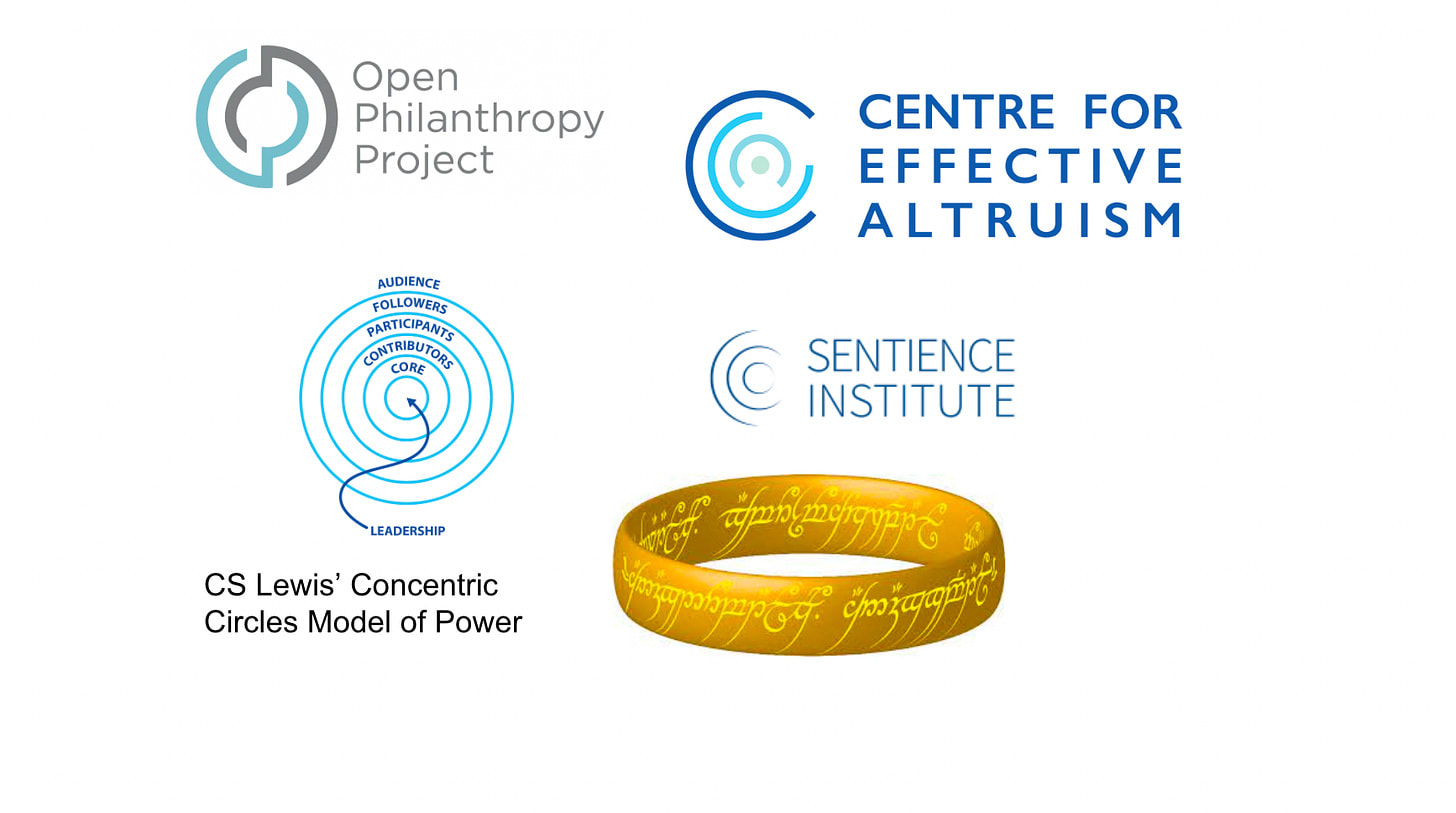
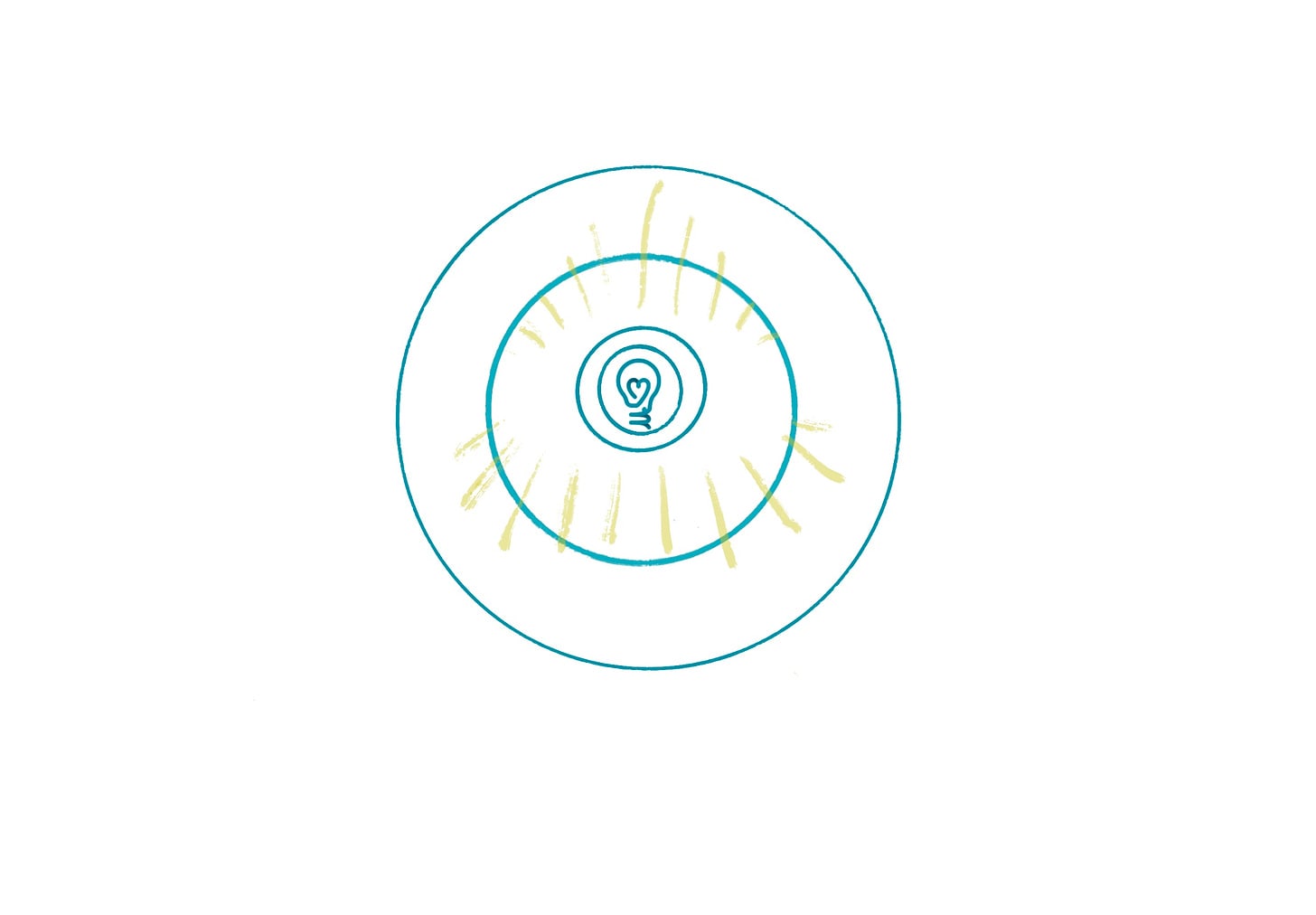
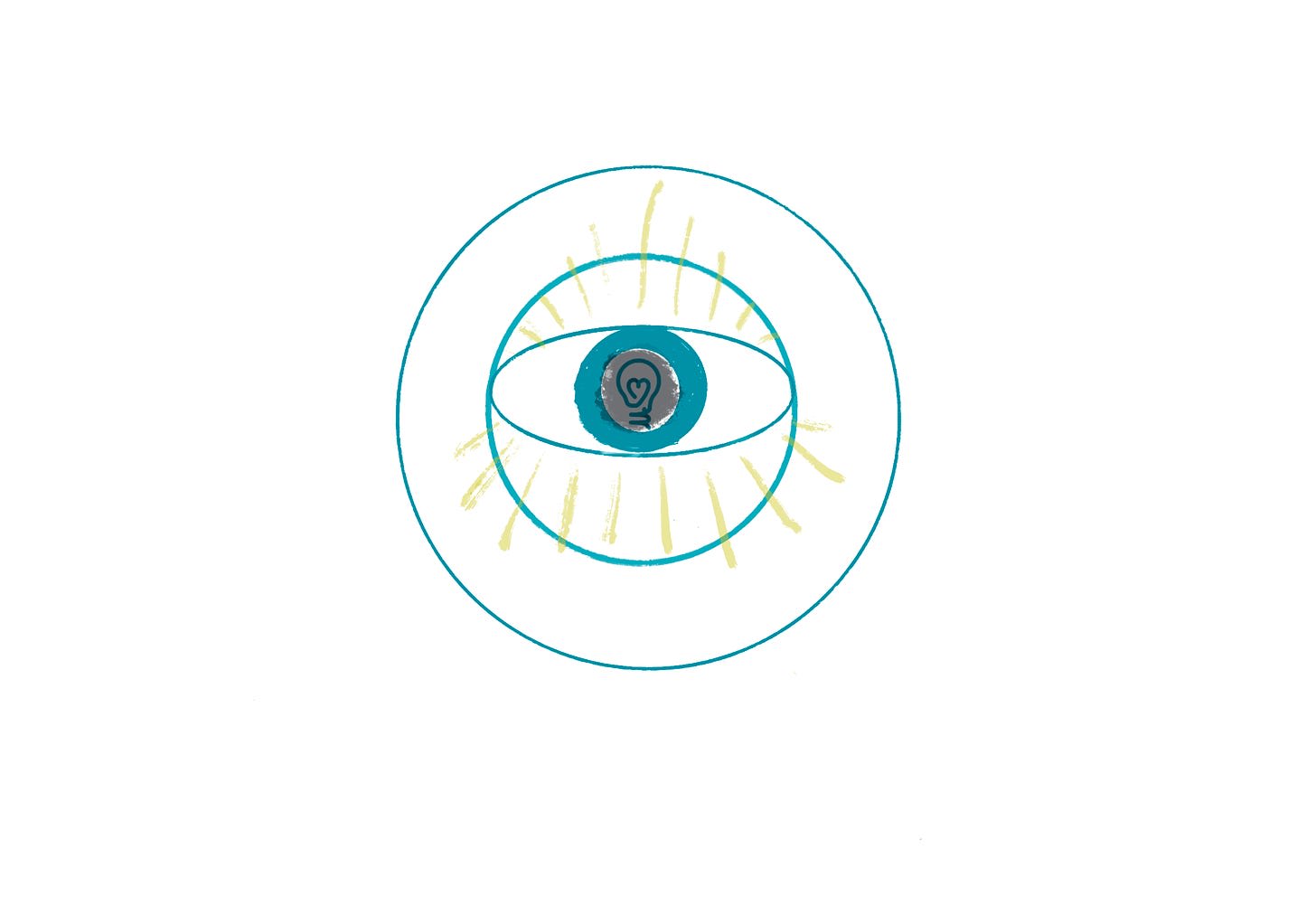
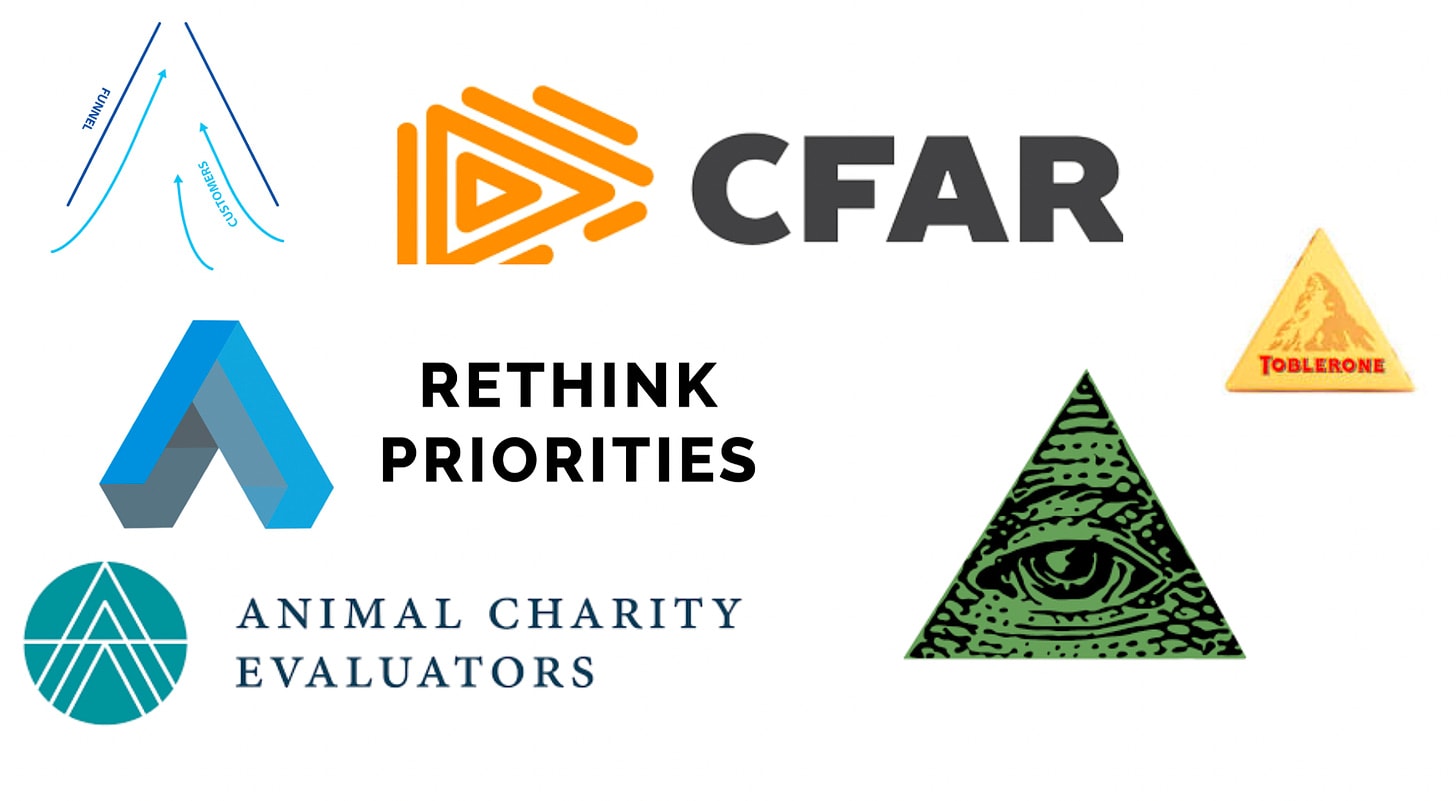
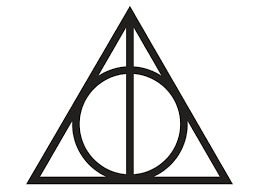
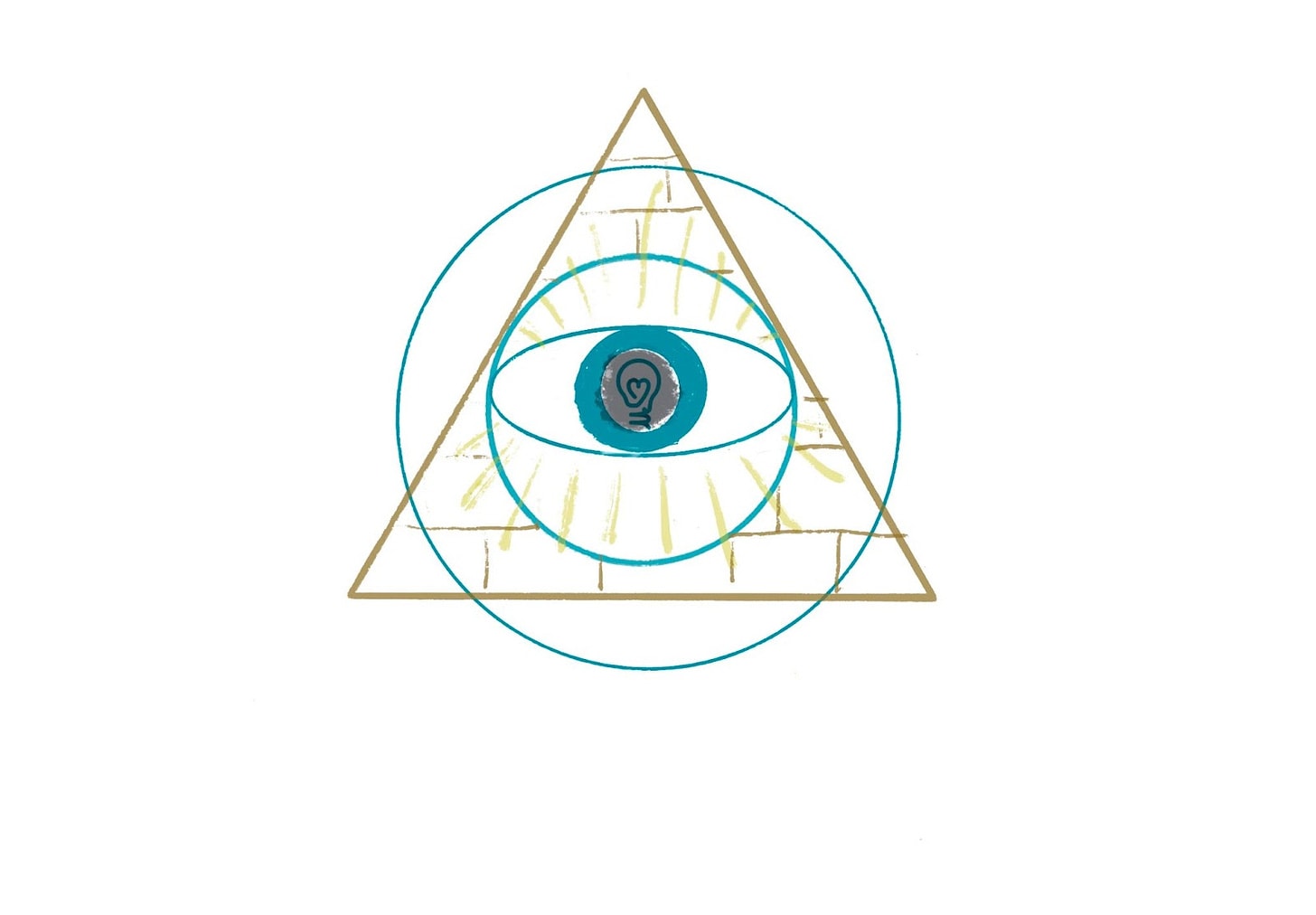
Any plans to have this printed on t shirts?
"Pyramid scheme" has a new meaning.
∆
Executive summary: This post satirically proposes rebranding the effective altruism movement as "Illuminatea" to reform the community and spread its ideology, combining symbols of enlightenment, expanding moral circles, inner rings, self-reflection, and pyramid structures.
Key points:
This comment was auto-generated by the EA Forum Team. Feel free to point out issues with this summary by replying to the comment, and contact us if you have feedback.